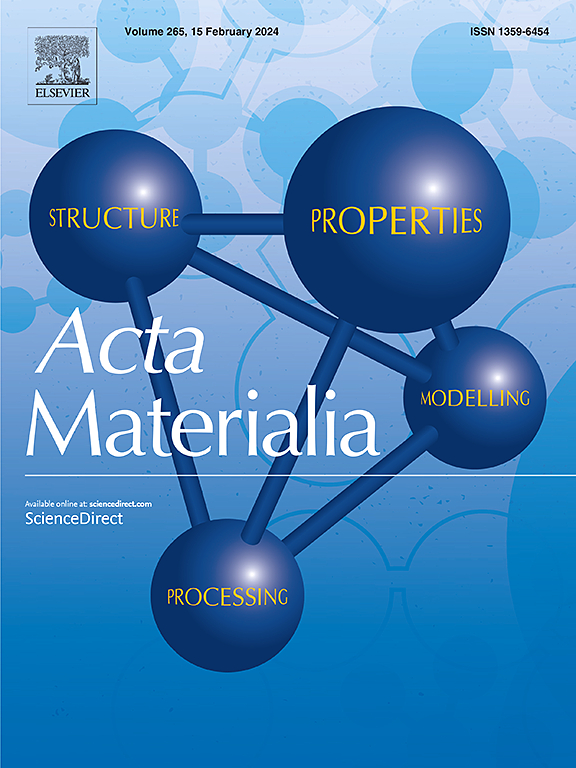屈曲无铁电片的层次结构
IF 8.3
1区 材料科学
Q1 MATERIALS SCIENCE, MULTIDISCIPLINARY
引用次数: 0
摘要
扁平的弹性薄片容易出现皱纹和褶皱。从衣物碎片到二维晶体,这些波纹的出现是对薄片压缩或拉伸、与其他弹性层的热或机械不匹配或表面张力产生的应变的响应。随着复杂氧化物单晶独立薄膜的出现,研究人员在金属、聚合物和最近的范德华剥离层中进行了广泛的研究,现在他们正在关注由弯曲铁电-铁弹性引起的新型微观结构效应,其中极化与晶格变形强烈耦合。在这里,我们表明,当转移到刚性衬底上时,粘弹性衬底上的BaTiO3片中的皱纹波动转变为扣层分层几何形状。利用不同尺度的空间分辨技术(拉曼、扫描探针和电子显微镜),我们展示了自由BaTiO3片中的这些分层如何沿着扣形轮廓显示铁弹性域的自组织,这与更多研究的正弦褶皱几何形状有很大不同。此外,我们还揭示了由这些折叠结构与优选的面内晶体取向不一致引起的二级结构域的层次分布。我们的研究结果揭示了无铁电材料中屈曲不稳定性的形态和取向与不同畴结构稳定化的相关性,为柔性氧化材料中铁电材料的畴工程指明了新的途径。本文章由计算机程序翻译,如有差异,请以英文原文为准。


Hierarchical domain structures in buckled ferroelectric free sheets
Flat elastic sheets tend to display wrinkles and folds. From pieces of clothing down to two-dimensional crystals, these corrugations appear in response to strain generated by sheet compression or stretching, thermal or mechanical mismatch with other elastic layers, or surface tension. Extensively studied in metals, polymers and, — more recently — in van der Waals exfoliated layers, with the advent of thin single crystal freestanding films of complex oxides, researchers are now paying attention to novel microstructural effects induced by bending ferroelectric-ferroelastics, where polarization is strongly coupled to lattice deformation. Here we show that wrinkle undulations in BaTiO3 sheets bonded to a viscoelastic substrate transform into a buckle delamination geometry when transferred onto a rigid substrate. Using spatially resolved techniques at different scales (Raman, scanning probe and electron microscopy), we show how these delaminations in the free BaTiO3 sheets display a self-organization of ferroelastic domains along the buckle profile that strongly differs from the more studied sinusoidal wrinkle geometry. Moreover, we disclose the hierarchical distribution of a secondary set of domains induced by the misalignment of these folding structures from the preferred in-plane crystallographic orientations. Our results disclose the relevance of the morphology and orientation of buckling instabilities in ferroelectric free sheets, for the stabilization of different domain structures, pointing to new routes for domain engineering of ferroelectrics in flexible oxide sheets.
求助全文
通过发布文献求助,成功后即可免费获取论文全文。
去求助
来源期刊

Acta Materialia
工程技术-材料科学:综合
CiteScore
16.10
自引率
8.50%
发文量
801
审稿时长
53 days
期刊介绍:
Acta Materialia serves as a platform for publishing full-length, original papers and commissioned overviews that contribute to a profound understanding of the correlation between the processing, structure, and properties of inorganic materials. The journal seeks papers with high impact potential or those that significantly propel the field forward. The scope includes the atomic and molecular arrangements, chemical and electronic structures, and microstructure of materials, focusing on their mechanical or functional behavior across all length scales, including nanostructures.
 求助内容:
求助内容: 应助结果提醒方式:
应助结果提醒方式:


